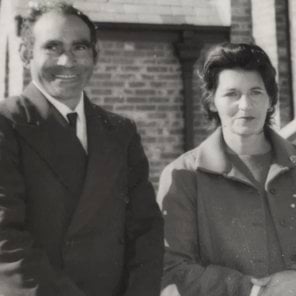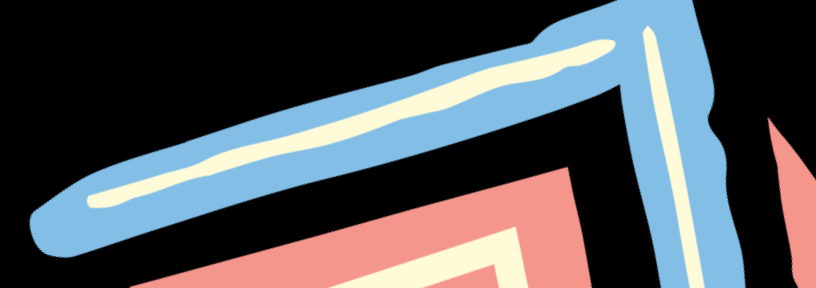
- Inducted:
- 2025
Bevan and Letty Nicholls were well-known and respected community members of Swan Hill. They were at the forefront of local initiatives supporting Aboriginal people in the area for many years and had a lasting impact on the region’s community.
Bevan was a Yorta Yorta and Wadi Wadi man who spent most of his life around Swan Hill. As a child, he lived at Cummeragunja Reserve where he was born in 1933. He was part of the 1939 Walk Off. He often reflected on the challenges Aboriginal families faced at that time, especially the struggle to stay together.
Bevan’s parents, Howard Herbert ‘Dowie’ Nicholls (1905-1942) and Gladys Nicholls (1906-1981), married in 1927. They had 3 children, Nora, Bevan and Lilian. Dowie tragically died in a car accident in 1942. Later that year, Gladys married Dowie’s younger brother, Pastor Doug Nicholls, the legendary Yorta Yorta activist who was knighted in 1972 for his work. Sir Doug and Lady Gladys had 2 more children, Pamela and Ralph. Bevan moved to Swan Hill at 14 to start work as a jackaroo on stations like Yanga and Murray Downs.
Letty was born into a Ngarrindjeri family in 1930 in Bordertown, South Australia. When she was little, Letty’s grandparents heard that state nurses were taking Aboriginal children from their families. To protect the children, her grandparents gathered them into a horse and cart and travelled east, eventually arriving in Swan Hill when Letty was 5.
Letty was the oldest grandchild in her family and had many talents. She was a skilled horsewoman and football player. Her grandmother, Christina Pinkie (née Bonney), and her mother, Emily Karpany, taught her their arts and culture. She learned beautiful weaving and feather craft from her mother and grandmother.
Bevan and Letty married in 1953. They had 8 children of their own, but Letty always said that she raised 9, as they adopted a little boy into their family. They fostered many other children in need of a home. In the early years of their marriage, they trapped rabbits and picked fruit by the season. They lived on the Church of Christ settlement and were one of the first families to move into new housing for Aboriginal families in Swan Hill.
Bevan and Letty were passionate about building a strong and supportive community in Swan Hill. They helped to organise events for the local community, including the first NAIDOC marches and Aboriginal debutante balls in the 1970s. They also started the annual Christmas Tree celebration. Bevan and Letty wanted to make sure that all children could get a gift from Santa and have a meal with their families. This event was cherished by the entire Swan Hill community as a symbol of togetherness.
Letty was instrumental in naming the local health and social services building Wandarrah, which means meeting place. Both Bevan and Letty were central to the establishment and success of Wandarrah. Even though the building doesn’t exist anymore, the name Wandarrah is still used by the community today.
Bevan and Letty worked tirelessly to improve services for their community. They encouraged Melbourne-based organisations to offer outreach services in Swan Hill. They were often on the road, travelling to Melbourne and Canberra to seek funding and support. Letty served as the Aboriginal Liaison Officer at Swan Hill Hospital for many years, advocating for greater support for Aboriginal patients and their families.
Bevan was a guardian of traditional knowledge and cared deeply for the land. He used his farming skills to grow market produce and passed on valuable cultural knowledge. He was also involved in early Native Title discussions in the Swan Hill area.
Both Bevan and Letty contributed to the Swan Hill Pioneer Settlement. Bevan worked as a groundskeeper and gave talks to school groups and visitors about Aboriginal culture. His work includes a dugout canoe and a woven rope net. These are in the Pioneer Settlement private collection to this day.
Letty was an accomplished weaver. Her work is featured in collections at the Koorie Heritage Trust and Bunjilaka at the Melbourne Museum. She was especially known for her skill in Ngarrindjeri feather craft. Letty created beautiful feather flowers and bouquets using traditional knowledge. She also organised local weaving workshops and taught her skills to family and community.
Bevan and Letty believed strongly in the importance of community care, focusing on 5 key issues; housing, health, employment, education and legal support. These 5 goals guided them in their work, and they were committed to making sure their community had access to all these essential services. Bevan and Letty worked together as a team for 65 years of marriage, tirelessly supporting their family and community.
Updated

